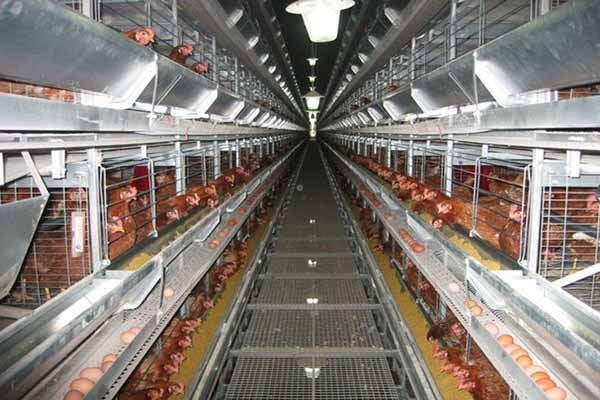Disease Prevention in Chicken Cage Setup: A Comprehensive Guide
Introduction to Disease Prevention in Chicken Cages
Preventing diseases in chicken cages is crucial for maintaining the health and productivity of your flock. A well-designed cage setup can significantly reduce the risk of diseases, ultimately leading to better economic returns. This article will discuss essential aspects of cage setup for disease prevention.
1. Ventilation
Proper ventilation is vital for maintaining a healthy environment in chicken cages. Adequate air flow helps in reducing ammonia levels, which can cause respiratory diseases in chickens. A study by the University of Arkansas found that proper ventilation reduced the prevalence of respiratory diseases by 50%. Ensure that your cages have sufficient openings for air circulation, and consider using automated systems to control the airflow.
2. Temperature and Humidity Control
Maintaining the right temperature and humidity levels is crucial for preventing diseases. Chickens are susceptible to respiratory, digestive, and other diseases when temperatures and humidity are outside their optimal range. According to the Journal of Applied Poultry Research, optimal conditions for chicken growth and health are 70-75°F (21-24°C) and 40-60% humidity. Use fans and heating/cooling systems to regulate the environment in your cages.
3. Cleanliness and Disinfection
Regular cleaning and disinfection of chicken cages are essential for preventing diseases. A study published in the Poultry Science journal revealed that cleaning and disinfecting cages reduced the incidence of infectious coccidiosis by 70%. Implement a regular cleaning schedule and use appropriate disinfectants to keep your cages clean.
4. Feeding Practices
Proper feeding practices can also help in preventing diseases. Ensure that your chickens have access to a balanced diet, as malnutrition can weaken their immune system. A study by the University of Guelph indicated that a well-balanced diet can reduce the risk of enteric diseases by 30%. Regularly monitor the quality of the feed and avoid overfeeding, as it can lead to obesity and other health issues.
5. Biosecurity Measures
Implementing biosecurity measures is crucial for preventing diseases from entering your flock. This includes controlling access to the farm, using footbaths, and implementing a quarantine program for new birds. A study published in the Avian Pathology journal reported that strict biosecurity measures reduced the risk of disease introduction by 60%.
Conclusion
By following these guidelines for disease prevention in chicken cage setup, you can significantly reduce the risk of diseases in your flock. A well-designed cage setup, along with proper ventilation, temperature control, cleanliness, and biosecurity measures, can lead to healthier chickens and better economic returns.
Contact us today to get a free, customized chicken cage setup design and equipment quote. Our team of experts is here to help you achieve optimal flock health and productivity.





